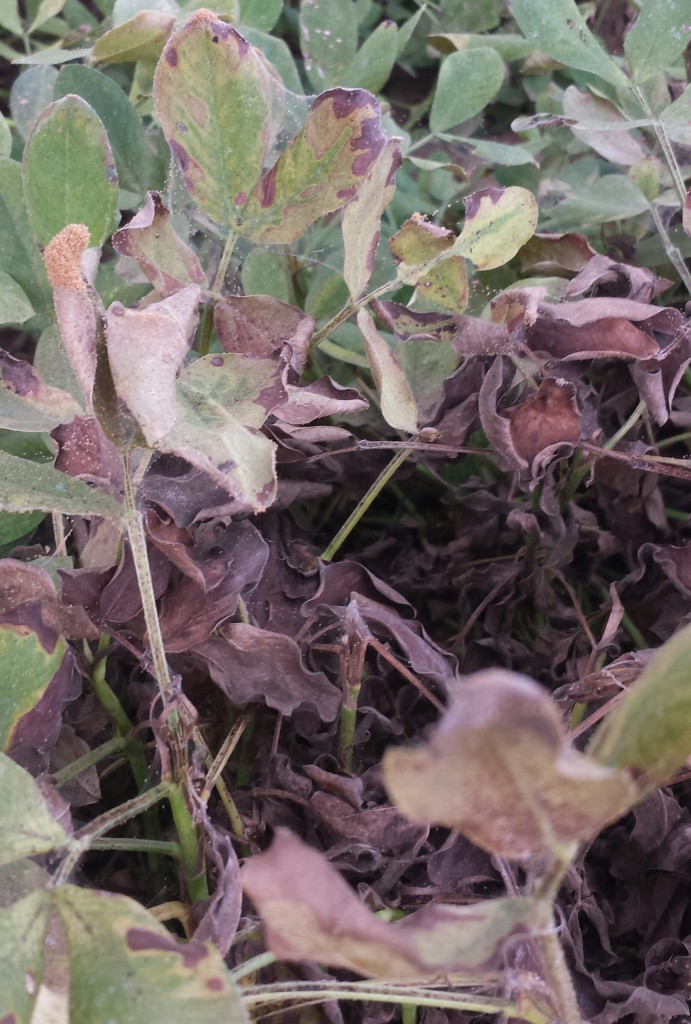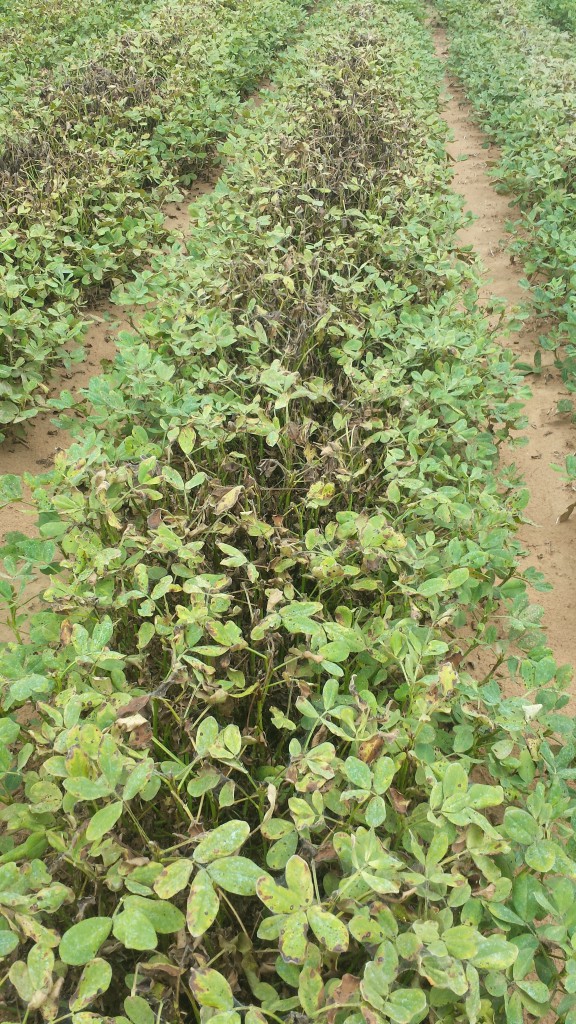 At this time of year, most producers are thinking about finishing their peanut crops and harvesting, but because of the late start to the season, there are still some management decisions left to be made. Northwest Florida has not had steady rains the past 6 weeks, leading to perfect conditions for spider mites: hot and dry. Spider mite damage starts out as a hotspot of yellowing peanut vines, turning brown and running down rows. This pest can complete its development in as little as 7 days at 81ºF. Female mites can lay up to 100 eggs over several weeks, making it a very successful pest in the right conditions.
At this time of year, most producers are thinking about finishing their peanut crops and harvesting, but because of the late start to the season, there are still some management decisions left to be made. Northwest Florida has not had steady rains the past 6 weeks, leading to perfect conditions for spider mites: hot and dry. Spider mite damage starts out as a hotspot of yellowing peanut vines, turning brown and running down rows. This pest can complete its development in as little as 7 days at 81ºF. Female mites can lay up to 100 eggs over several weeks, making it a very successful pest in the right conditions.
 One grower out in West Florida experienced a spider mite outbreak recently. It began in the dry corner of a peanut field and continued to spread throughout that corner and jumped the road to a field that has no irrigation. He tried to control the spread by using a bifenthrin product, but the spider mites continued to move down the rows. When asked about the spider mites, he said that the problem seemed to increase exponentially overnight. He is still fighting to control the mites because the field is not ready to dig. (See the photo below).
One grower out in West Florida experienced a spider mite outbreak recently. It began in the dry corner of a peanut field and continued to spread throughout that corner and jumped the road to a field that has no irrigation. He tried to control the spread by using a bifenthrin product, but the spider mites continued to move down the rows. When asked about the spider mites, he said that the problem seemed to increase exponentially overnight. He is still fighting to control the mites because the field is not ready to dig. (See the photo below).
So what can be done to control spider mites? Dr. Mark Abney, UGA peanut entomologist, had this to say about control, “The only true miticides registered for use in peanut are Omite, Comite or Comite II. These all have the same active ingredient (propargite). These products work well on mites, but two applications are commonly needed, since there is only limited activity against the egg stage. There are two pyrethroids with some spider mite activity (fenpropathrin and bifenthrin). These products will reduce populations temporarily, but resurgence is common within 2-3 weeks. I do not recommend the use of a pyrethroid for mite control unless the peanuts are within a couple weeks of harvest.”
For more information on this and other peanut insects pests, please see the following UF/IFAS publication:
Identification and Monitoring of Insect Pests in Peanut
